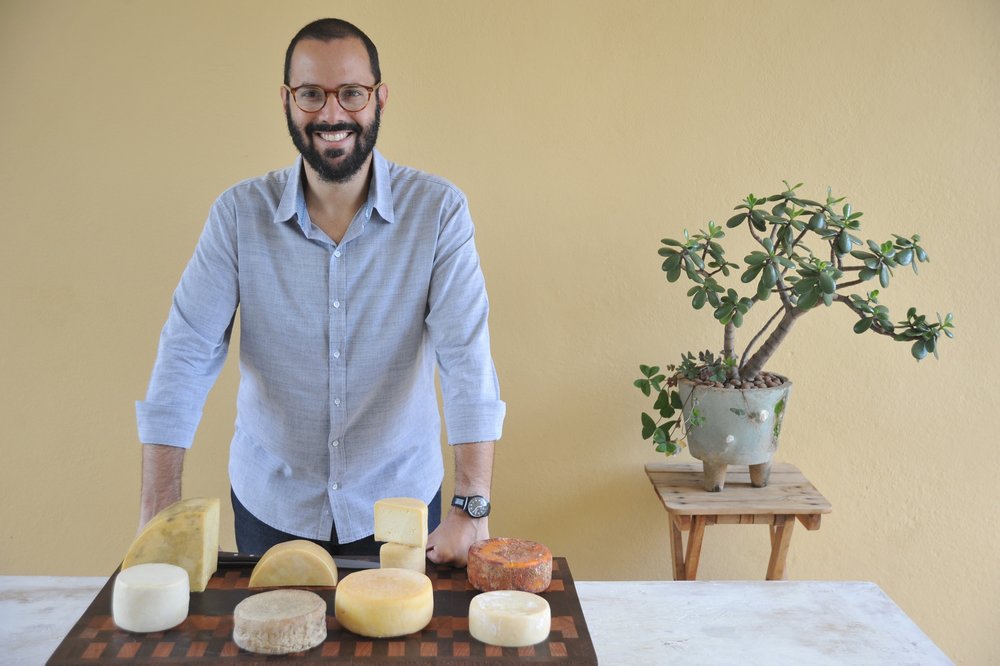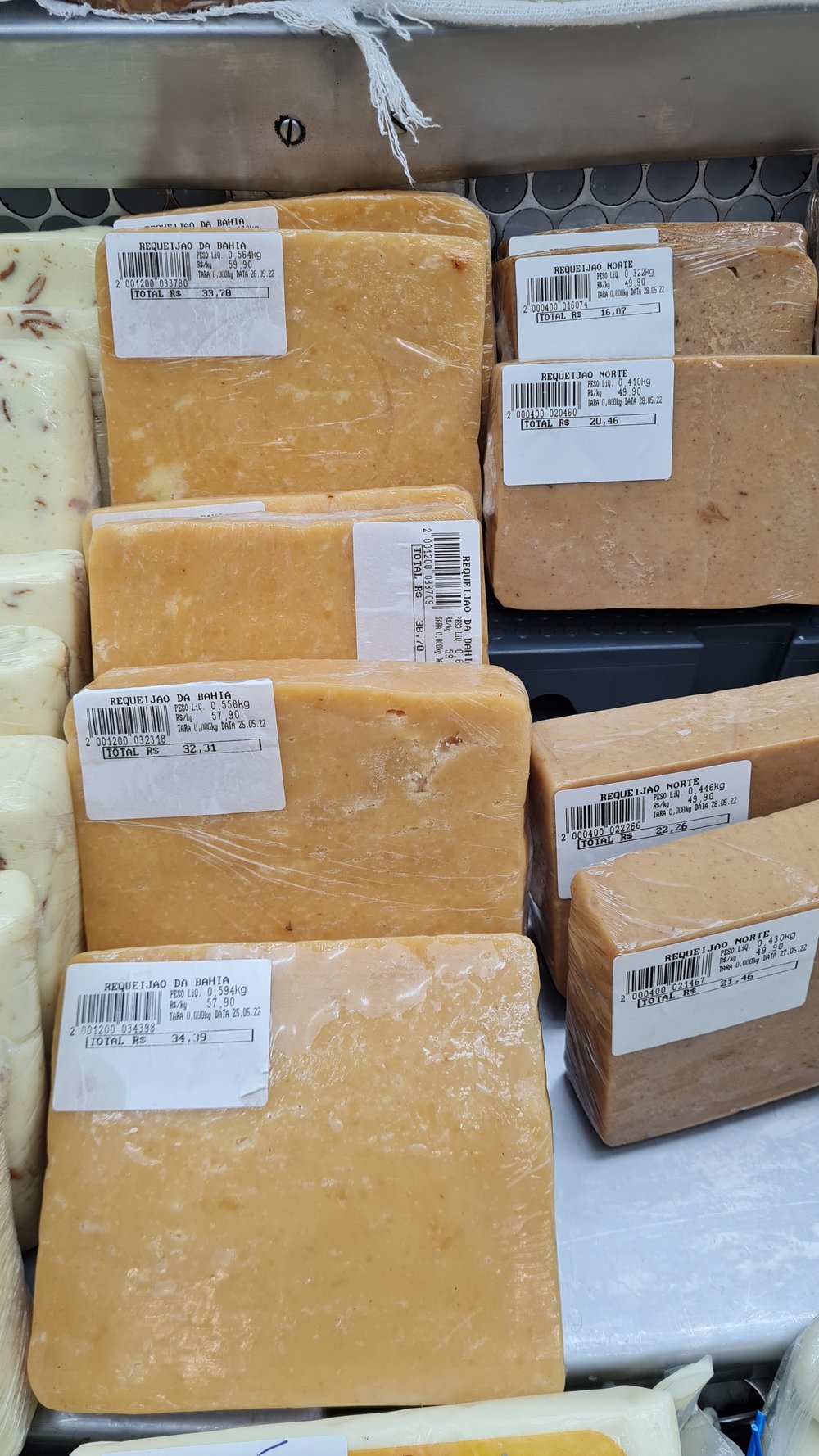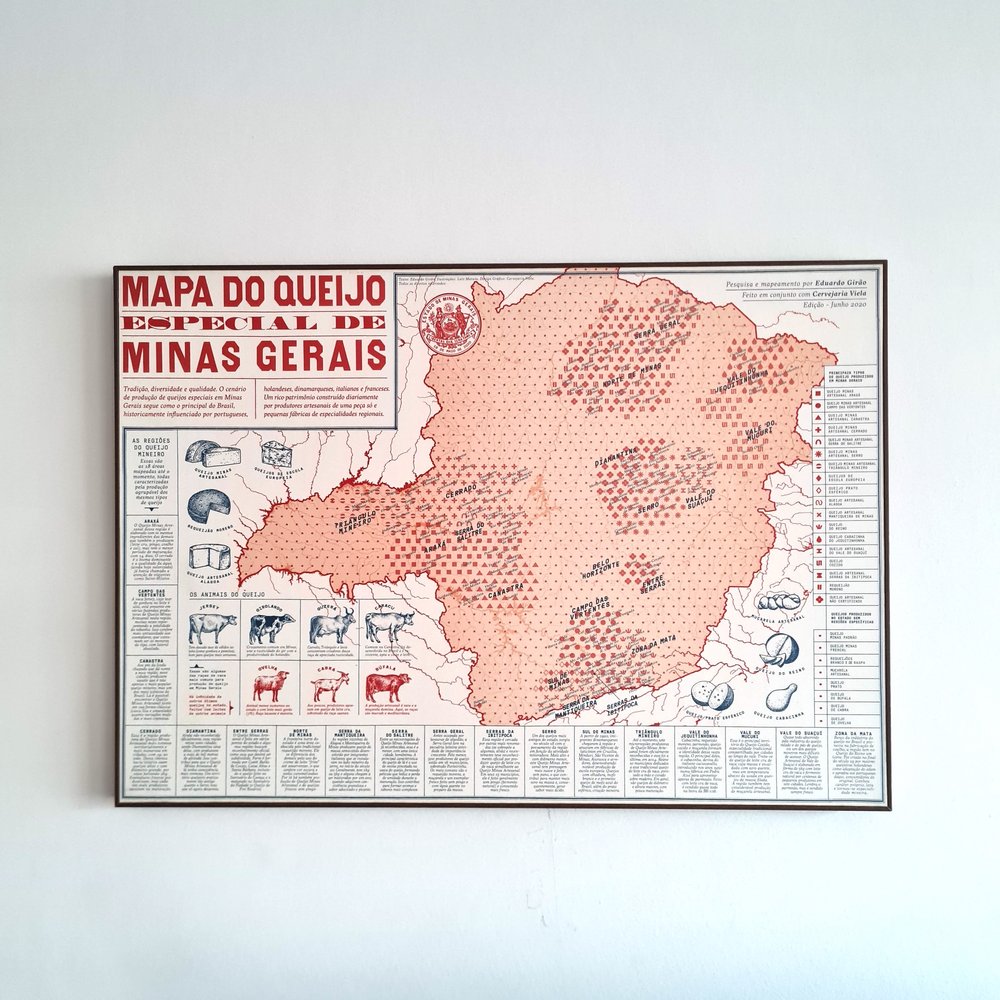
If you follow me on Instagram, you know I am a big advocate for Latin American producers and I was recently in Brazil visiting producers and learning more about the cheesemaking culture there. When planning my trip, I have the expert advice of food journalist Eduardo Tristão, who recommended an itinerary and helped me contact producers to visit.
I met Eduardo in the city of Belo Horizonte, the capital of the state of Minas Gerais, the most famous cheesemaking region of the country and had a chance to try many cheeses there. Soon, after my return to the UK, I decided to interview him and here are some of the things he shared with me. The original interview was conducted in Spanish and Portuguese and has been translated and edited by me for clarity. You can follow him on Instagram at @eduardotristaogirao
What is unique about cheesemaking in Brazil?
Defining Brazilian cheese is not a simple task. Although it has a relatively new cheesemaking history compared to European countries, Brazil is territorially immense and culturally diverse. It’s only a few centuries of production, but it’s a few centuries of cheese made everywhere (from the equatorial forest to the frozen fields of the south) and by very diverse groups of people. Portuguese influence is a constant in many regions, but people such as Germans, Danes, and Italians, among others, also played an important role in the formation of the Brazilian cheese-making nation.

Which do you consider to be the quintessential cheese from Brazil?
Let me tell you about a cheese that is probably unique in the world, created here, known as: Requeijão de Corte. It is made from the fusion of curd (fermented and coagulated milk) with cream or butter through heating and stirring. It is produced with slight variations, and it is known with different names in many regions, but the basic cheesemaking process remains the same. Requeijão can be found in the Amazon, and it is made by producers in the states of Minas Gerais and São Paulo, as well as in some regions of the Northeast. Undoubtedly, due to its presence in many parts of Brazil and its multiple versions, this cheese is one of the most typical, interesting, and delicious cheeses in the country.
You are originally from the state of Minas Gerais and have done research there. Could you tell us why you think this region has become associated with cheese?
Minas Gerais is the biggest cheese-making center in Brazil because its production is based on three very solid pillars: tradition, diversity, and quality. The state has been producing cheese since at least the 18th century, and currently we can highlight about 20 regions and 30 types of cheese produced throughout these territories. There are cow, goat, sheep, and buffalo cheeses; artisanal and industrialized; made with raw and pasteurized milk. No other Brazilian state has such a diverse scenario, and this is due to the multiple cultural heritages of people who settled this country, including Portuguese, Dutch, Danish, Italian, and French. At the same time, Minas Gerais treated cheese not only as the great commercial product that it is, but as part of its identity, its culture, its gastronomy. The inhabitants of the state are known as cheese eaters and for their pride in the food. You can eat cheese with everything and all day in Minas Gerais: from breakfast to dinner, pure or in recipes, with coffee, cachaça, beer, or wine.
More recently, producers from Minas Gerais have won awards in international and national competitions and that has helped in the recognition that Minas Gerais cheeses have always been of great quality.

A couple of years ago, I became aware of your work because I saw online a map that you created highlighted the cheese regions of the state of Minas Gerais. What motivated you to create such a document?
I’ve been writing about gastronomy for almost 20 years and in the last six I’ve devoted my attention to Minas Gerais cheeses, realizing that, although the inhabitants of the state love cheese and claim to be connoisseurs, they almost always consume only a few types and don’t really know what this territory actually produces.
A couple of years ago, together with my sister and business partner, Denise, we started the work of writing independent reports on cheese, traveling to producing regions for research, publishing audio-visual material on my Instagram profile, conducting tastings open to the public, and providing consultancy services for those who wanted to start selling cheese. We started collecting information and the Mapa do Queijo Especial de Minas Gerais (specialty cheese map of Minas Gerais) was published in 2020 as the culmination of my work as a gastronomic journalist. The map is based on our research, including mapping information and writing the text. Then it was all put together by Rafael Quick who served as our graphic designer, using illustrations by Luís Matuto.
We felt that we needed a better understanding of the cheeses we have in order to correctly inform and transform the way we consume this incredible food that is so steeped in culture and history. The main cheeses and producing regions of Minas Gerais are represented on this map, including small descriptive texts and a lot of information that is not available anywhere else, including governmental surveys of producers. We include many cheeses from the famous Queijo Minas Artesanal Canastra to the Cabacinha do Vale do Jequitinhonha. I am proud to say that this is the most complete mapping ever done on the cheeses produced in Minas Gerais.
I love the map and I am happy that I got mine. Is it still available for sale?
Unfortunately, it’s not. The current edition is sold out and I am working to update and redo the map and its information.
You speak with many producers, what are you hearing from them? What do you think is the current situation for producers in Brazil?
We are in a difficult moment in Brazil, with an economic and political crisis, in addition to a tense scenario with the proximity of the presidential elections. Inflation has reduced the prospects of many dairy businesses, strangled small cheese producers, and significantly reduced the purchasing power of consumers. Definitely a bad scenario. The production costs of milk and cheese have risen a lot, and this has had an impact in price for the final consumer. Some retailers have made price increases accordingly, but many at a lower level than necessary to compensate the producer. At the same time, it is necessary to recognize that the Brazilian consumer has been increasingly interested in national cheese, especially artisanal, as well as becoming aware of the real importance of valuing small producers, traditional cheeses, and responsible production. In addition, in recent years many Brazilians have traveled through the country in search of cultural and gastronomic experiences, and many have included cheese in part of their journeys to know the country better. So, this is starting to have a positive impact in how artisanal cheese is marketed and sold.
Also, from what I know there are still some barriers to sale artisanal cheeses nationwide, am I correct?
Actually, a couple of days ago there was an important change in legislation that could facilitate the legal sale of cheeses across Brazilian states. Details are still being shared, but basically before this change small artisanal producers could not sell their cheeses everywhere due to bureaucratic issues involving different inspection systems. The new rules give local municipalities the authority to inspect producers, therefore empowering more people at the local level. This, we hope will open up markets for artisanal producers all over the country. We hope this will benefit many producers that until now were prohibited from selling their products in more affluent cities and regions.
Thanks Eduardo! I hope this change also starts setting up the groundwork for many of these cheeses to be exported to the US and Europe. Brazilian cheeses are unique, and it would be wonderful to have them in cheese counters all over the world. Want to know more? Read about the award-winning cheeses of Brazil.
